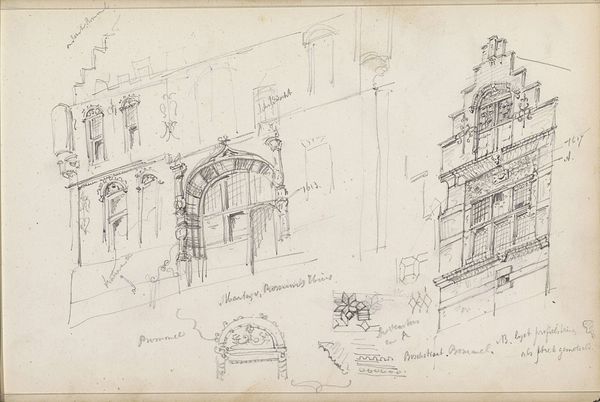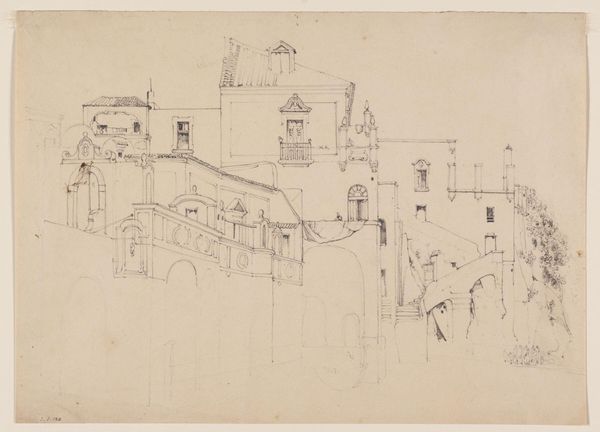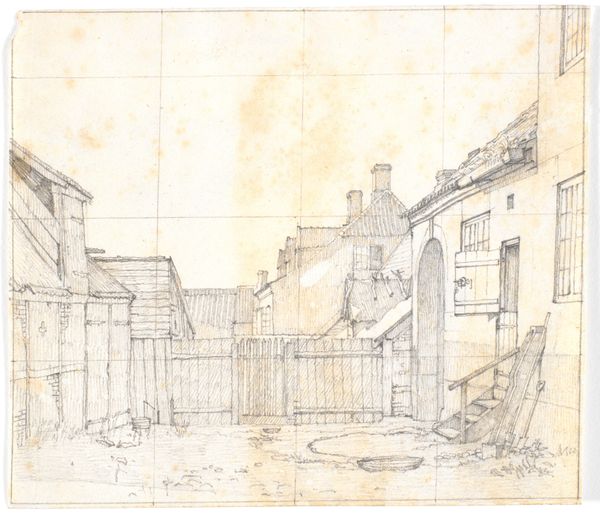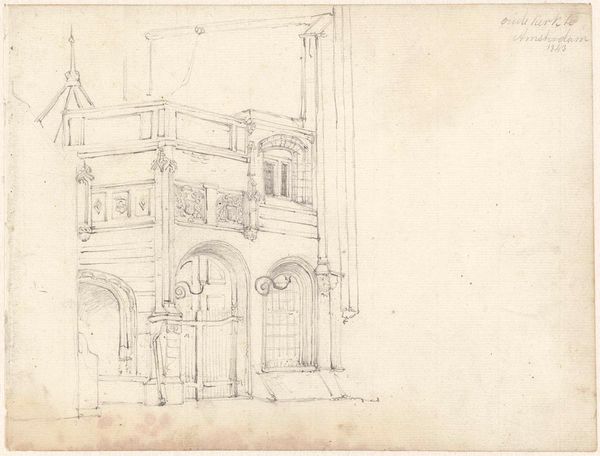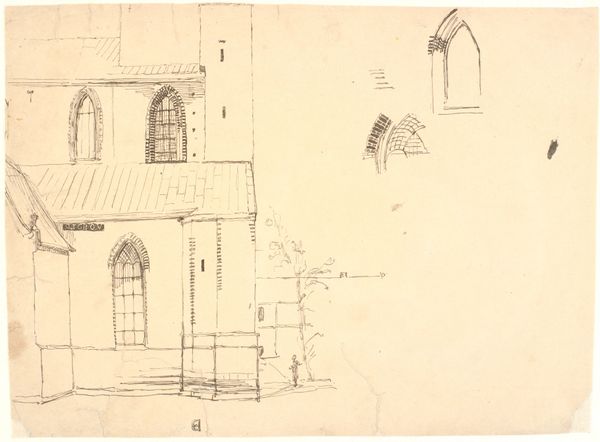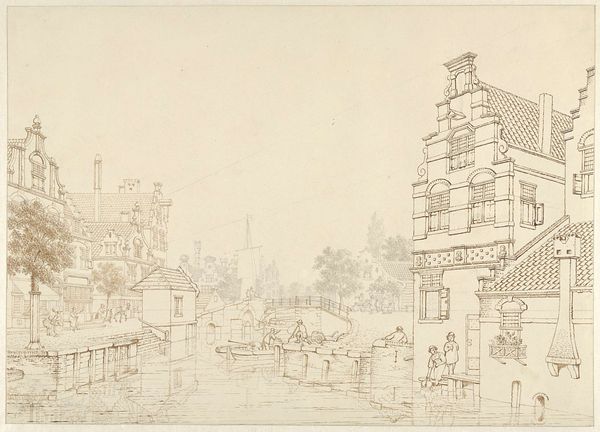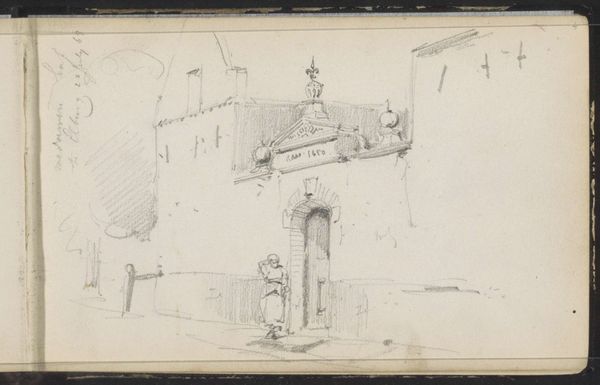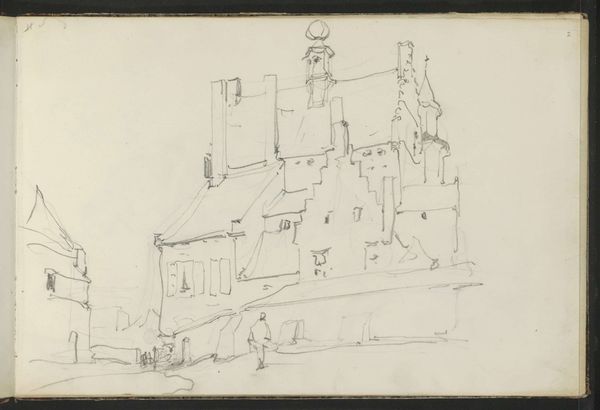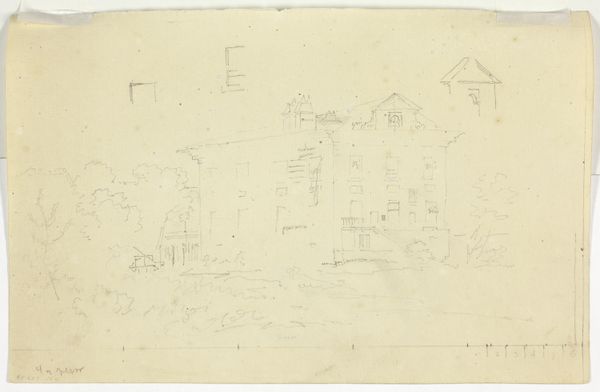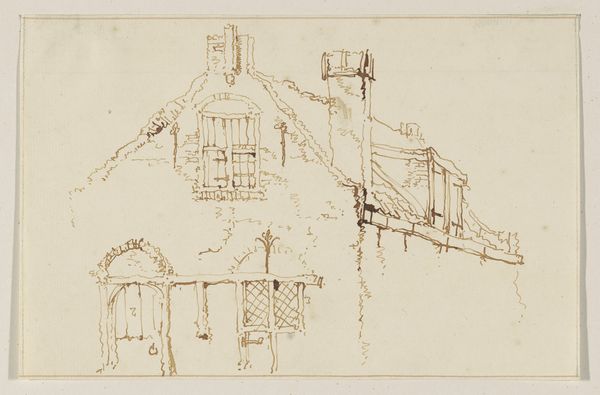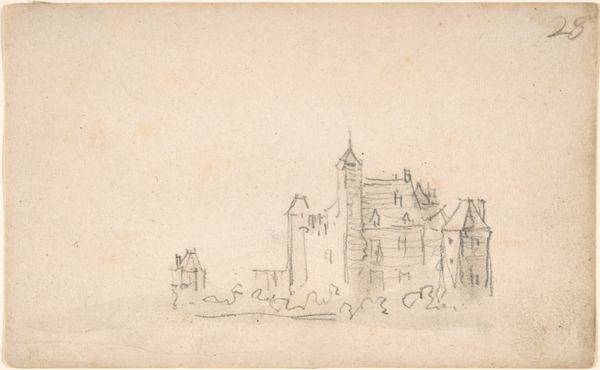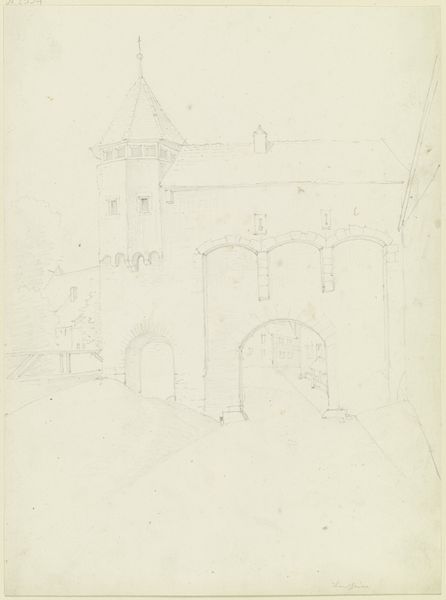
drawing, paper, ink, architecture
#
architectural sketch
#
drawing
#
neoclacissism
#
quirky sketch
#
landscape
#
paper
#
personal sketchbook
#
ink
#
sketchwork
#
romanticism
#
pen-ink sketch
#
architecture drawing
#
sketchbook drawing
#
cityscape
#
storyboard and sketchbook work
#
sketchbook art
#
architecture
#
initial sketch
Dimensions: height 146 mm, width 190 mm
Copyright: Rijks Museum: Open Domain
Curator: This pen-and-ink drawing on paper, titled "Huizen en een poort in Westminster," was sketched in 1806 by John Linnell. Editor: There's something about this sketch—it feels like a fading memory, with lines dissolving into the paper. It has this ghostly, almost melancholy presence. Curator: Indeed. Observe how Linnell utilizes a very limited tonal range, relying on the delicate, almost skeletal, network of lines to define form. The architecture itself takes center stage, its bare structure exposed. The artist skillfully used linear perspective in this early sketch. Editor: Look at the archway—it evokes so many historical arches, gates to the past, or even psychological thresholds. And that subtle fading—is that deliberate, or has time simply worn away at the ink? Regardless, that quality enhances the dream-like impression, suggesting both ruin and enduring memory. What would have gone through this door frame? Curator: That's interesting, considering the socio-political mood during the rise of industrial England; there's an inclination toward Neoclassicism visible within this sketch, possibly indicating an aspiration toward some prior glory. Consider also how he directs our eye by modulating the weight of the lines themselves, creating depth in this sketch of a city. The drawing contains elements of Romanticism also, making for a somewhat uncanny hybrid. Editor: Absolutely. Those chimneys rising on the left contrast strangely with the monumental gate structure, speaking to tensions between the domestic sphere, the looming threat of the factories and the echo of old power. This gate would symbolize access to all kinds of domains of memory for viewers then. Curator: Note, finally, how he creates an impression of grand architectural mass without heavy rendering—essentially suggesting structure more than detailing it, almost as if conjuring space from nothing. Editor: In short, this delicate cityscape drawing holds multiple layers—loss, the power of architectural symbolism, and a strange atmospheric weight. Curator: It provides an interesting view into how Linnell synthesized both neoclassical and romantic ideologies through line and form.
Comments
No comments
Be the first to comment and join the conversation on the ultimate creative platform.
